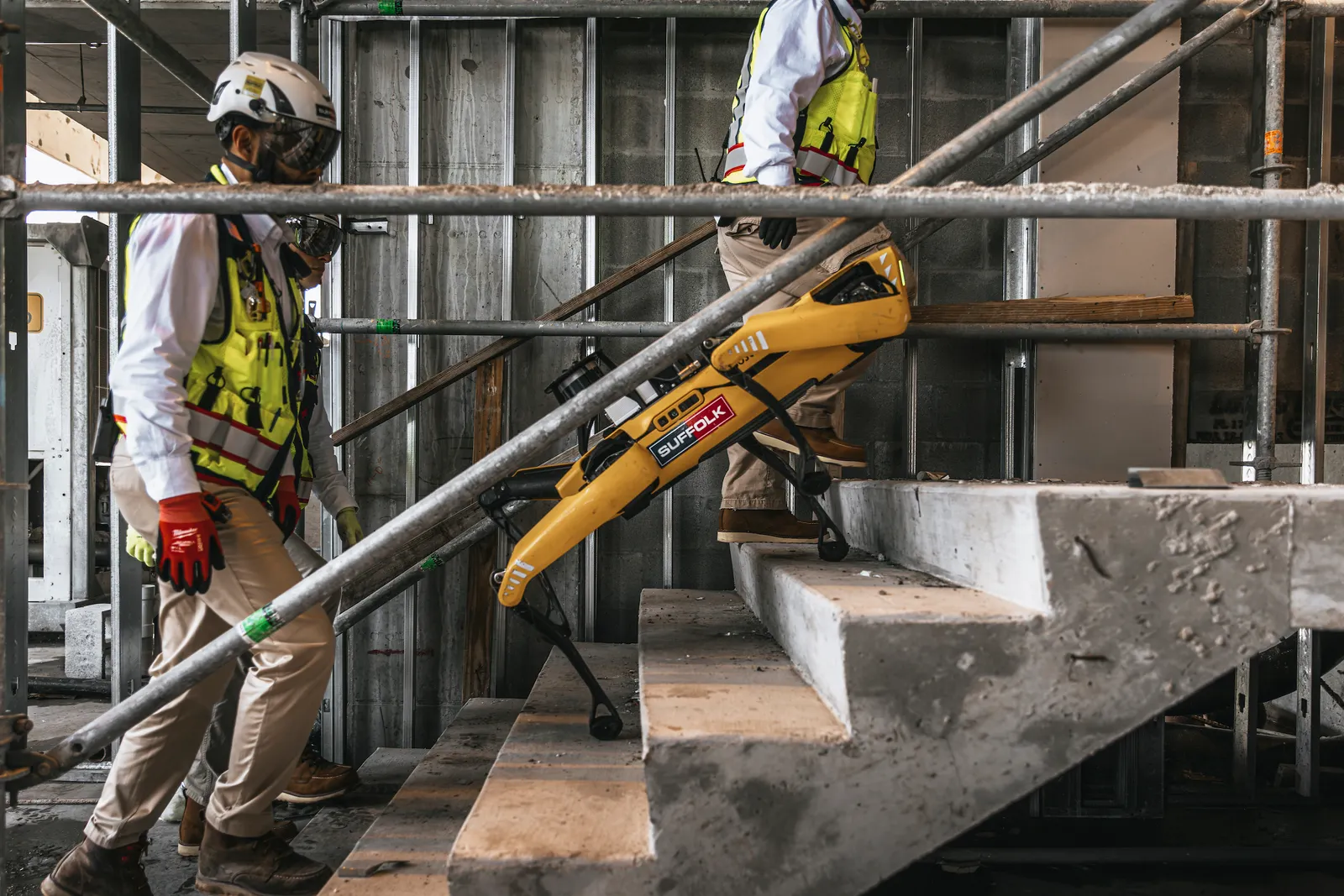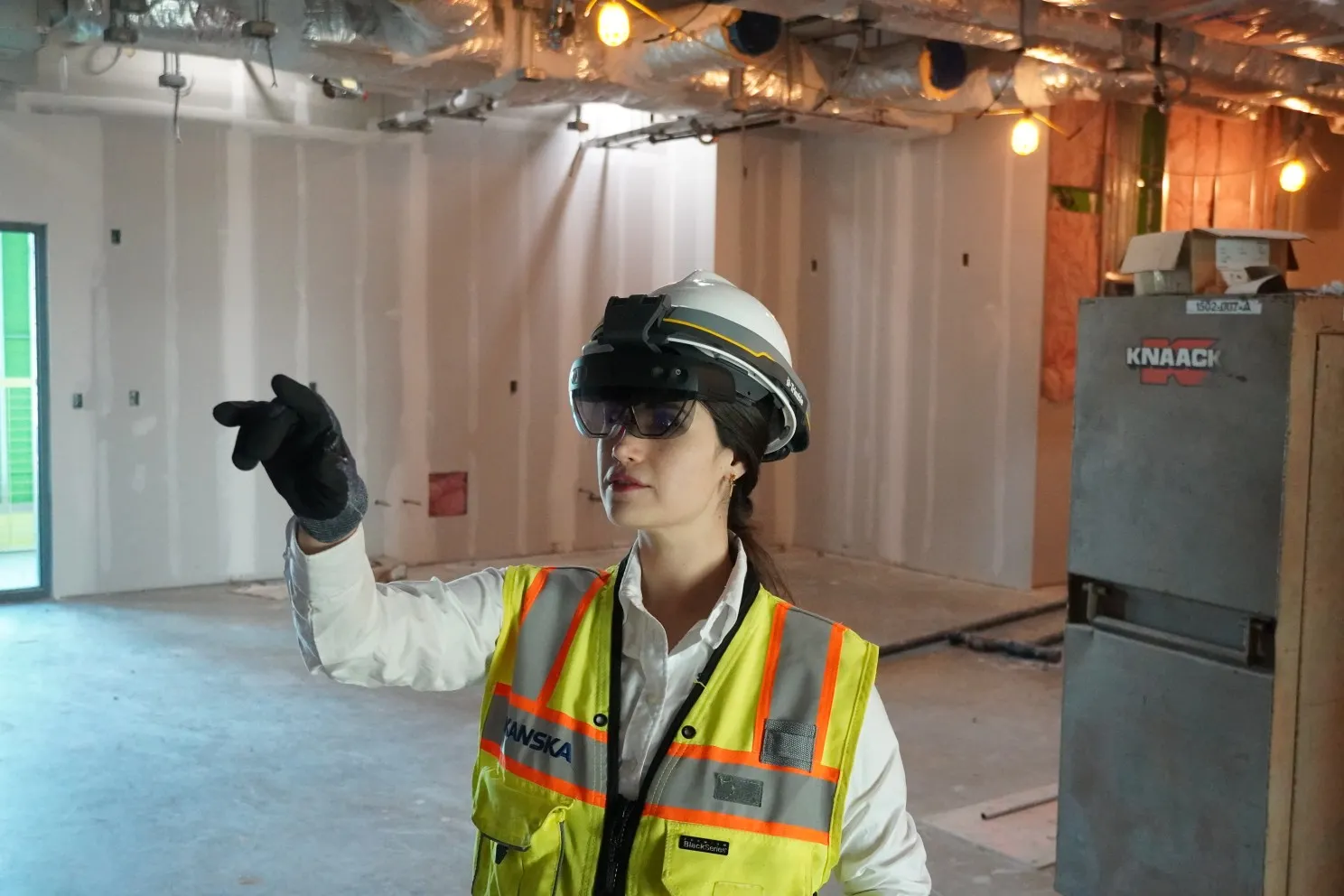In an era of rapid technological advancement for the construction industry, one piece of technology looms above the rest in status and notoriety — artificial intelligence.
Its omnipresence in the larger business conversation has not escaped construction. While industry pros took a cautious stance toward the tech after its widespread release in late 2022, contractors are now increasingly turning to AI in order to solve business problems, largely via chat-like interfaces that serve up hard-to-find project specs with just a few keystrokes.
For example, London-based Balfour Beatty is in the process of developing StoaOne, a large language model generative AI assistant that will help employees mine what Kasey Bevans, Balfour Beatty US chief information officer, calls “untold billions of data points.”
“To our teammates, it will feel like StoaOne is talking to them, providing instant insights and project information as they procure, plan and execute their projects,” Bevans said in an email to Construction Dive.
Swedish contractor Skanska is also working on its own AI helper — Sidekick, a generative AI chatbot built on the same technology as ChatGPT, which will help employees at the company plumb the firm’s collective expertise on projects and problems. The company told Construction Dive that Sidekick had seen over 2,500 interactions during the 30 days prior to Dec. 16, when Skanska pulled the data.

Suffolk Construction uses Boston Dynamics’ Spot, a customizable quadruped robot that specializes in capturing data by walking around.
Permission granted by Suffolk Construction
Using AI in this way addresses one of construction’s oldest and most fundamental challenges – namely, culling together and making sense of information from hundreds and even thousands of stakeholders on a project in an industry that is more fragmented than unified. The result has been an AI arms race among contractors to develop tools — or bolt them together off the shelf — to make sense of myriad data sources in seconds.
“Data is everywhere, and it’s unstructured, and the challenge that I’ve had over the last four or five years is coming up with the right meta tagging schemes or structures to make them universally useful to everyone,” said Mike Zeppieri, vice president of emerging technology at Skanska USA. “What AI has allowed us to do is not have to worry about that as much, as long as we build it into a data model.”
Top down and bottom up
However, as AI democratizes access to project information and the knowledge gap levels out, contractors are also feeling heat to adopt it faster, and better, than their peers.
While most see it as a tool to aid their business, contractors are also experiencing a subtle, underlying pressure to adapt or get left behind — whether from higher ups at the home office or teams’ telegraphed sense of urgency in the field.

Skanska is using AI to build its projects faster and better.
Permission granted by Skanska
In particular, small contractors have reached a critical point in their businesses, where it’s important to keep up with tech adoption.
“It’s time to get big or strongly consider an exit very shortly,” said Chad Prinkey, the CEO of Baltimore-based Well Built Construction Consulting, a strategic consulting firm. Prinkey added that for a business to make those leaps, it needs financial strength.
“If you’d rather spare yourself the hassle of growth, consider selling as close to now as possible. Prices for small firms will diminish as the gap in sophistication between them and their acquirers grows,” Prinkey said.
In that sense, technology leaders may get squeezed from the top down, but also from the bottom up, where if they don’t implement AI as a business, their boots on the ground may go out and acquire it themselves. For example, while Gilbane prides itself as a tech-forward contractor, its field personnel have been clamoring for even faster uptake.
“We [started] to hear a lot of feedback and a lot of noise from our field teams, saying, ‘Why are we not doing this?’” said Rawle Sawh, Providence, Rhode Island-based Gilbane Building Co.’s director of operations technology. “‘A competitor of ours is doing this. Why are we not doing it?’”
More tech, more money
Contractors across the globe are already experimenting with AI as a means to enhance their businesses via outside companies.
Gilbane, for example, used New York City-based Trunk Tools’ chat-like offering to track nearly 21,000 documents on its $456 million joint venture renovation of the Baird Center, a Milwaukee convention venue.
“How important is AI to the business as we move forward?” mused Lindsay Marshall, Gilbane’s director of data and analytics. “We recognize the power and the criticality of staying on top of the value that AI can offer.”
As AI’s value grows, so does the cash spend on the part of contractors looking to leverage it better, faster and smarter.
Jim Barrett, chief innovation officer for New York City-based Turner Construction, said that the company has at least tripled or quadrupled its investment in AI over the past couple years.
Barrett said that while the firm already has in-house AI staff, the next steps would be to implement other large language models, like Google Gemini or Anthropic’s Claude, another conversational LLM backed by Google and Amazon, and integrate them into the company’s in-house systems.
“We’re moving very quickly, and the challenge is keeping up with the rate of improvement in the AI solutions,” Barrett said.
Gilbane’s philosophy on AI usage is similar. Sawh said that if teams can demonstrate a need for a solution as well as a return on investment for the builder, Gilbane will likely spring for it.
“Let’s just say, where there’s a will, there’s a way,” Sawh said.
No risk, no opportunity
While contractors say AI provides a host of benefits, the advancement brings an implied problem — builders who fall behind in adopting the tech also risk losing a competitive edge in the marketplace, experts say.
Turner’s Barrett echoed a popular refrain — that AI won’t take a worker’s job, but the person who uses AI will. The same, he said, is true of companies, in that a builder that uses AI will disrupt the business of a builder that doesn’t.
“What I see in our industry and other industries is caution, almost fear, imagining all these scenarios of things that could go wrong,” Barrett said. “If you want zero risk, you also have zero opportunity.”
Balfour Beatty’s Bevans agreed.
“We also know that adopting new technologies and implementing them in our operations differentiates ourselves so we can significantly change the construction industry,” Bevans said.
Gilbane’s Sawh takes a more measured approach. Despite the company’s ongoing adoption of AI, the tech’s status as make-or-break tool is still undecided, in his view.
“I don’t necessarily know if it would sink the ship,” he said about not adopting AI generally across the business to maintain a competitive position in the market. At the same time, he also aims to give his field teams the tools they need to do the job.
“We want to be able to support them, and this is the only way we can do it, by staying ahead of it,” Sawh said.

